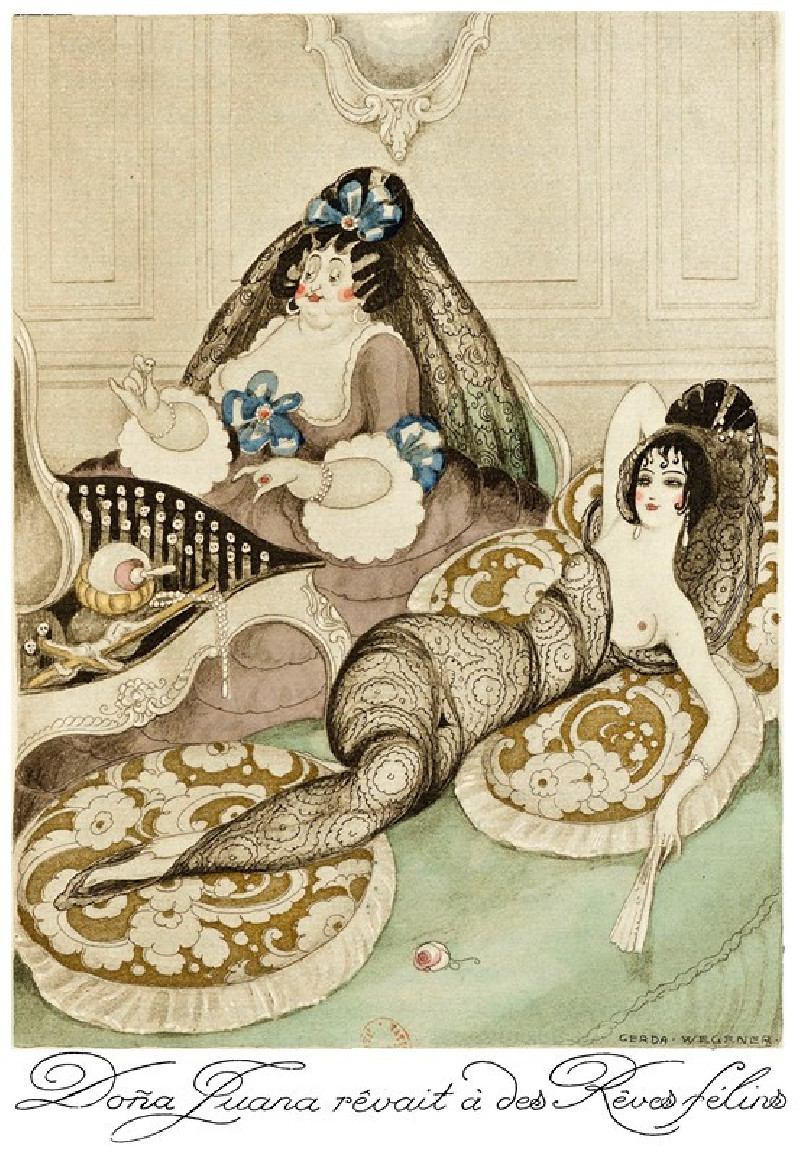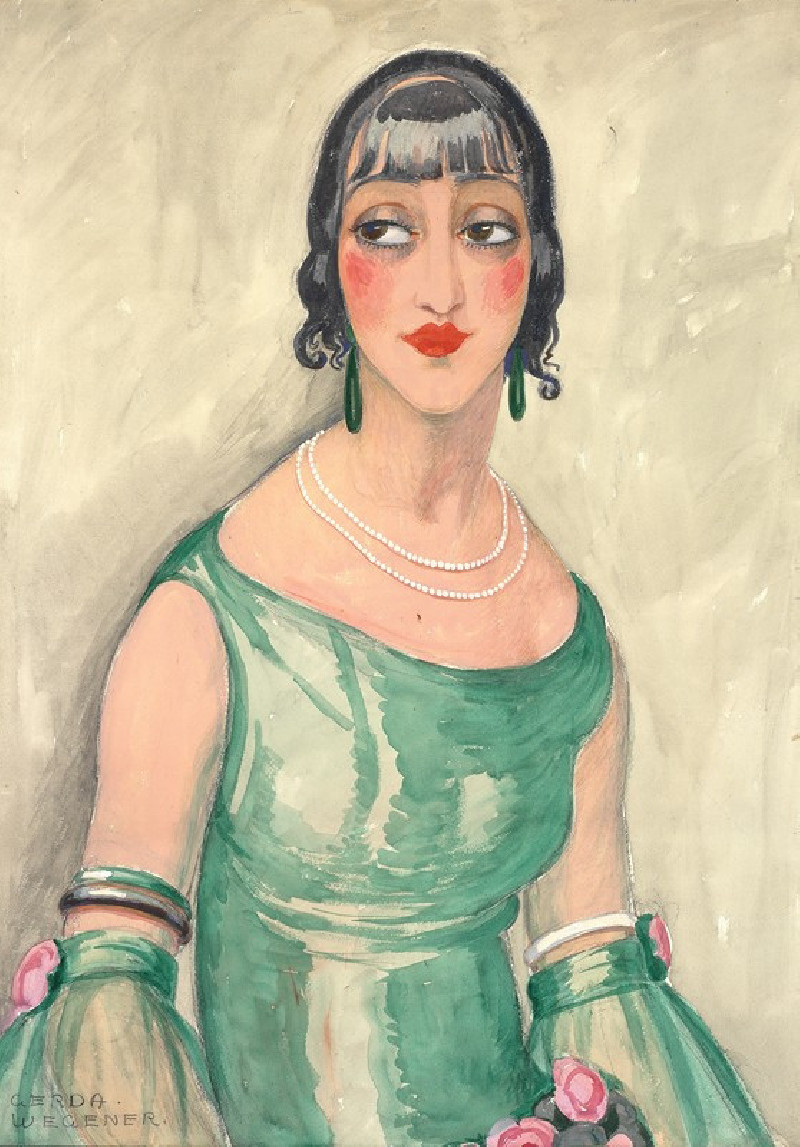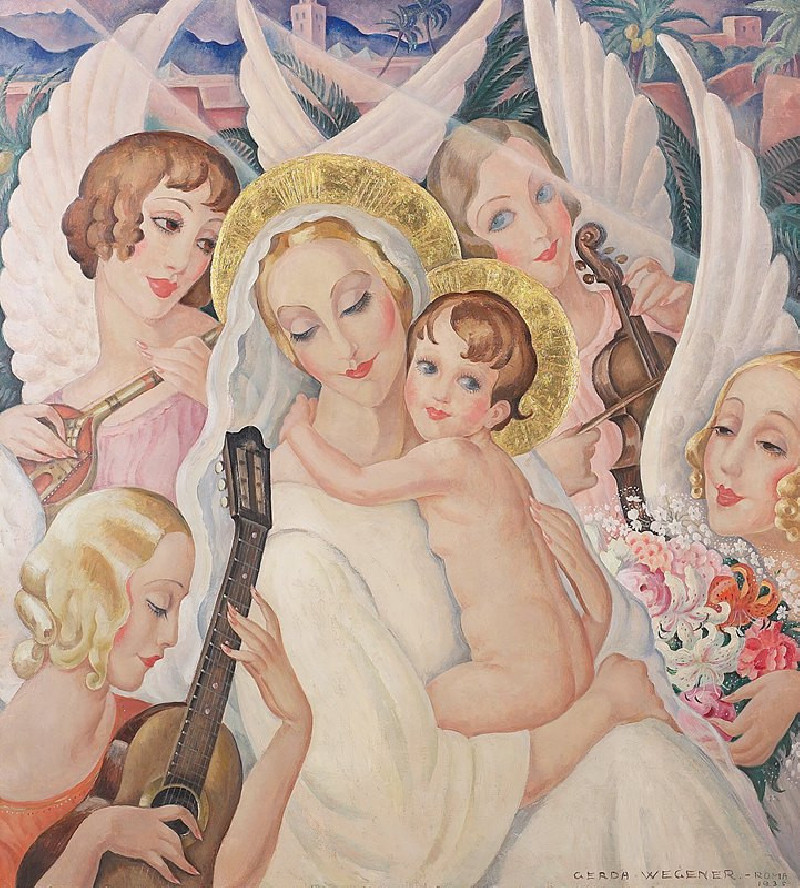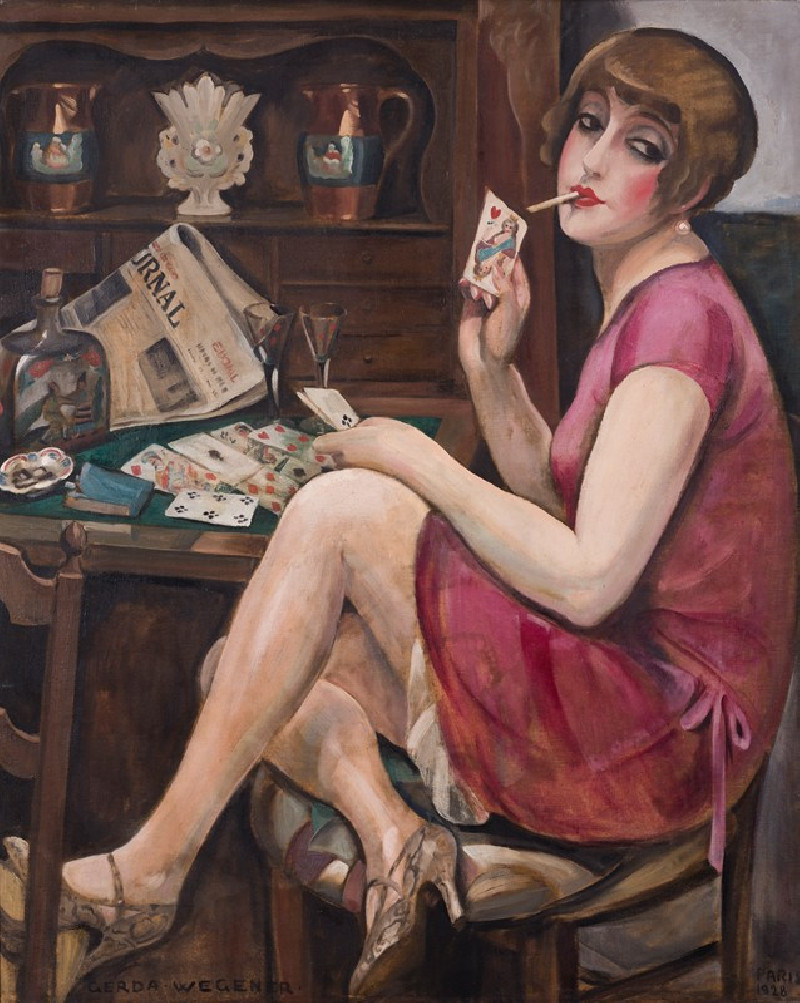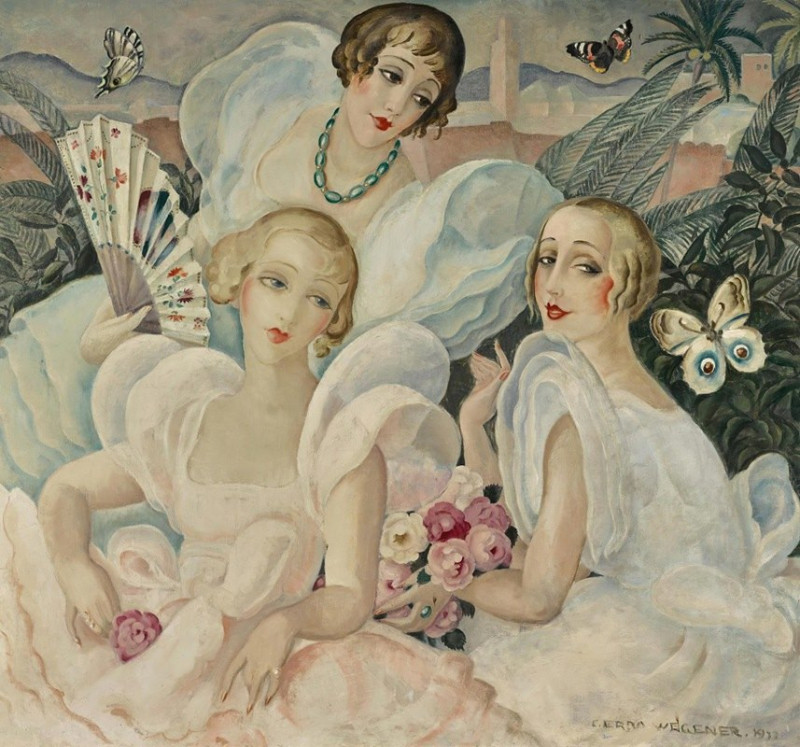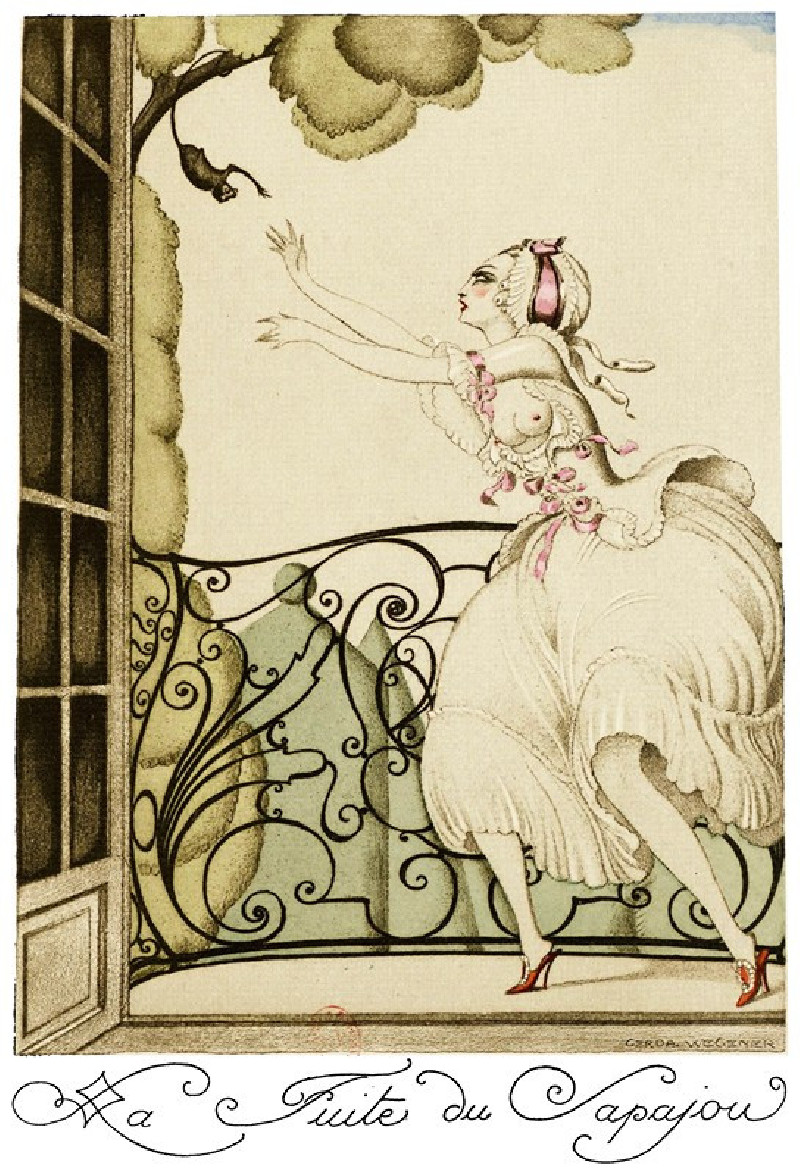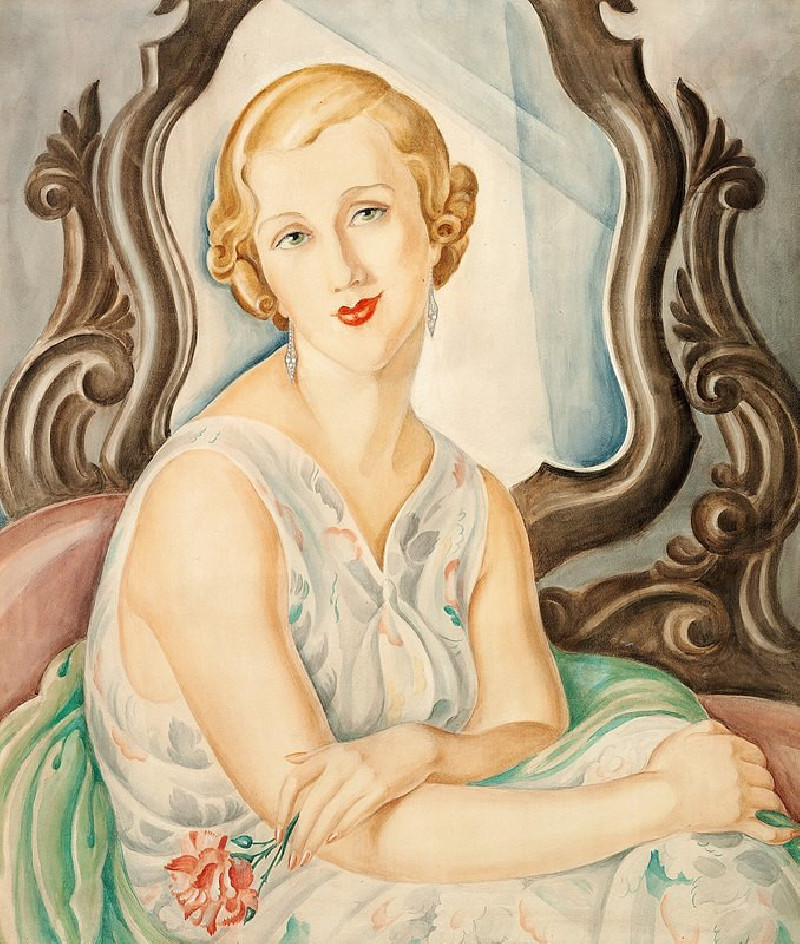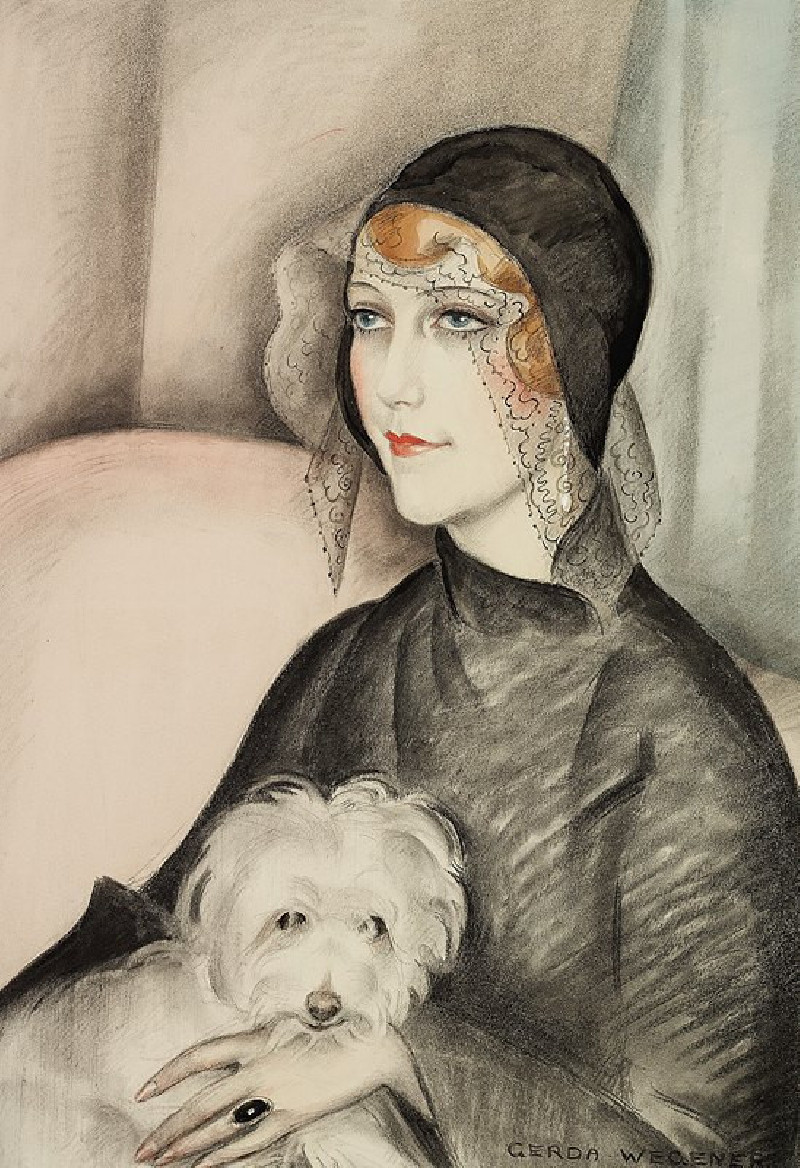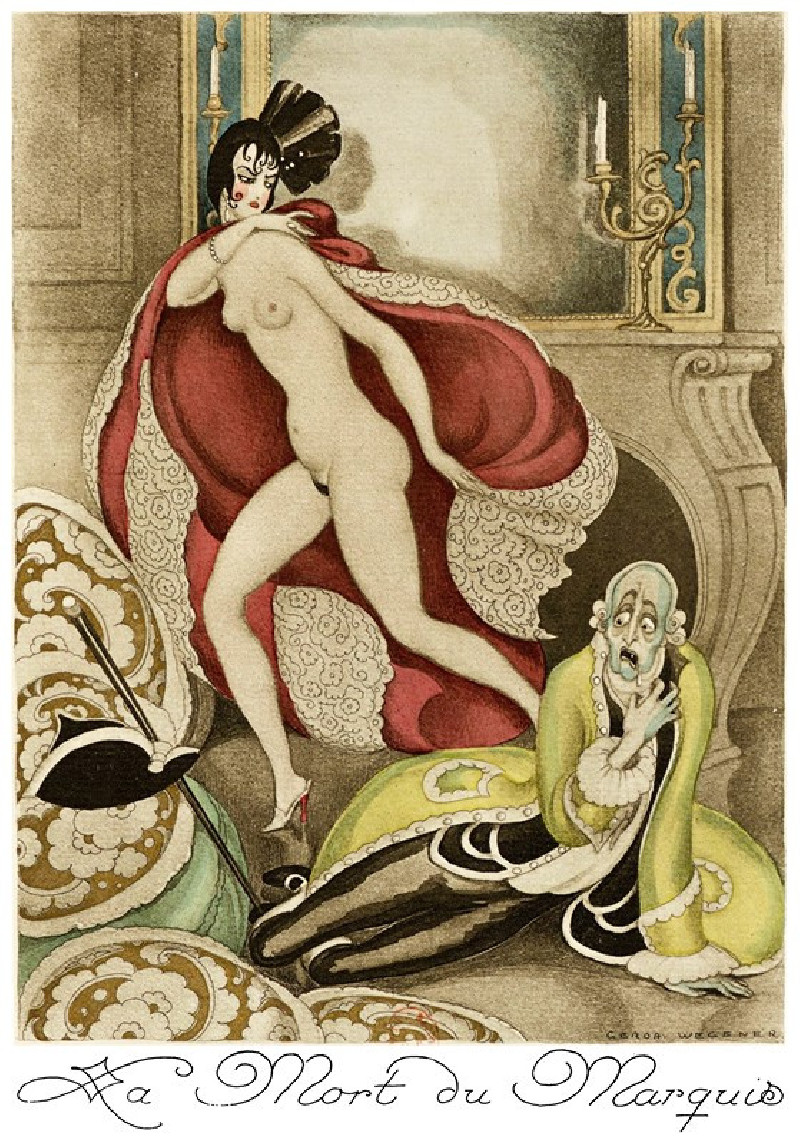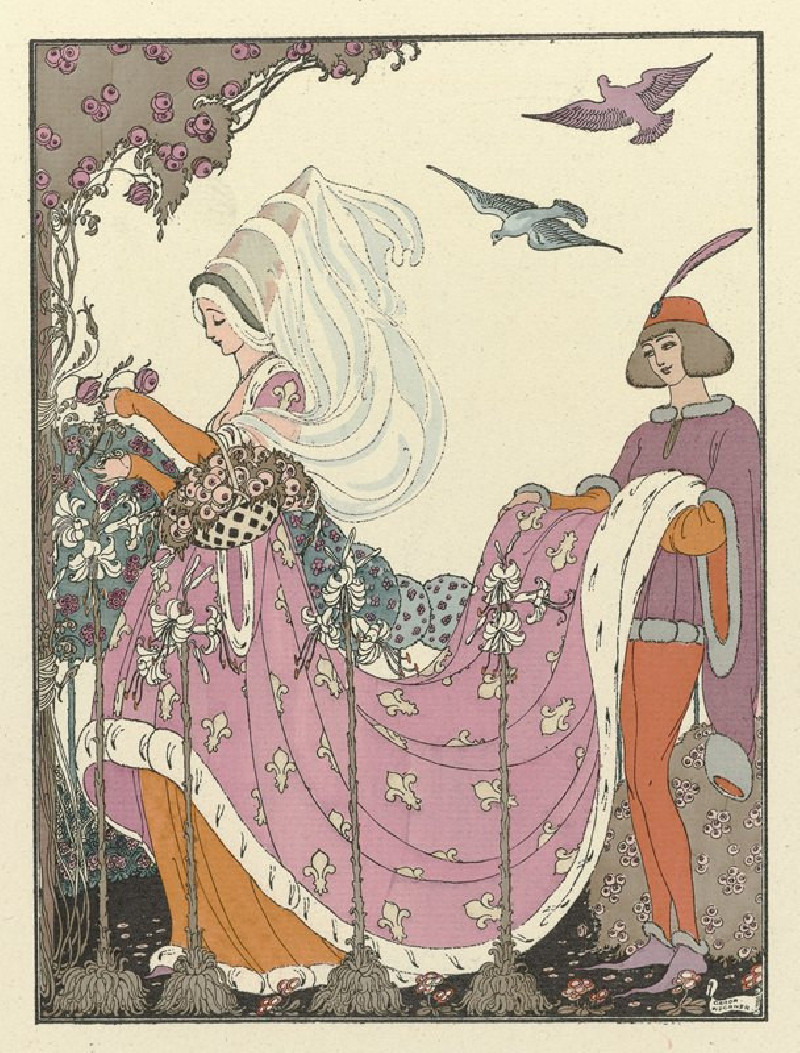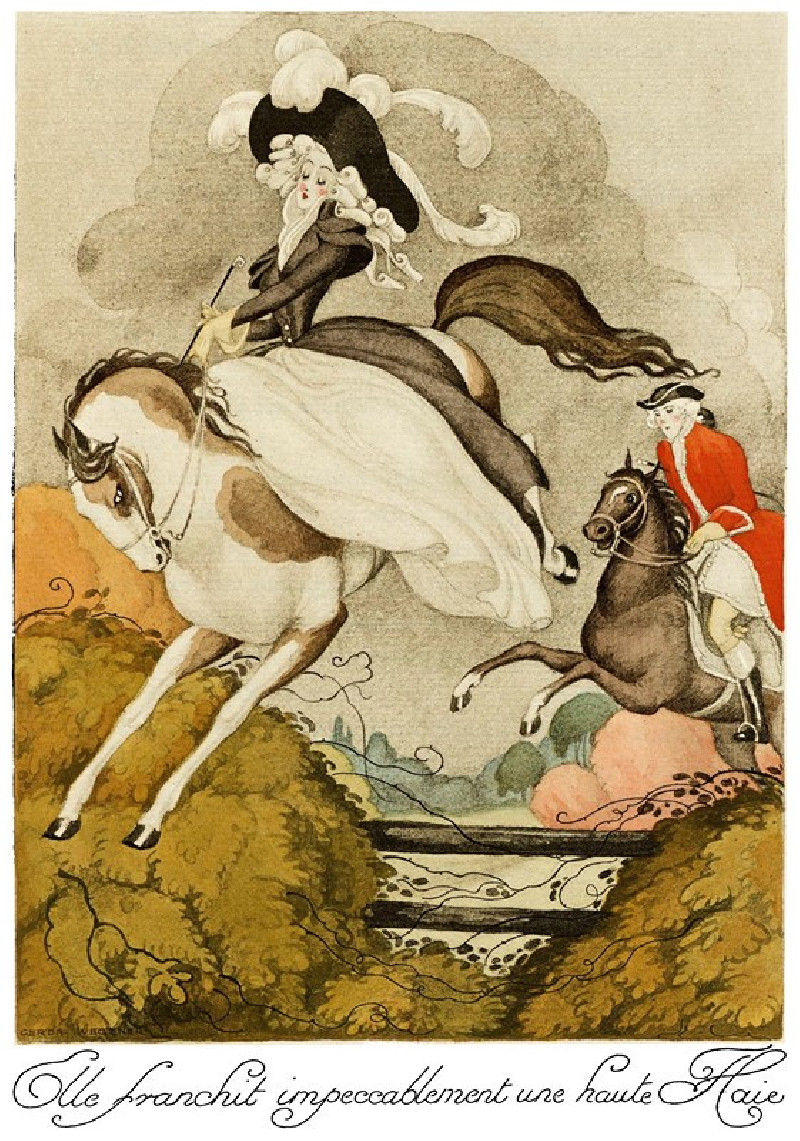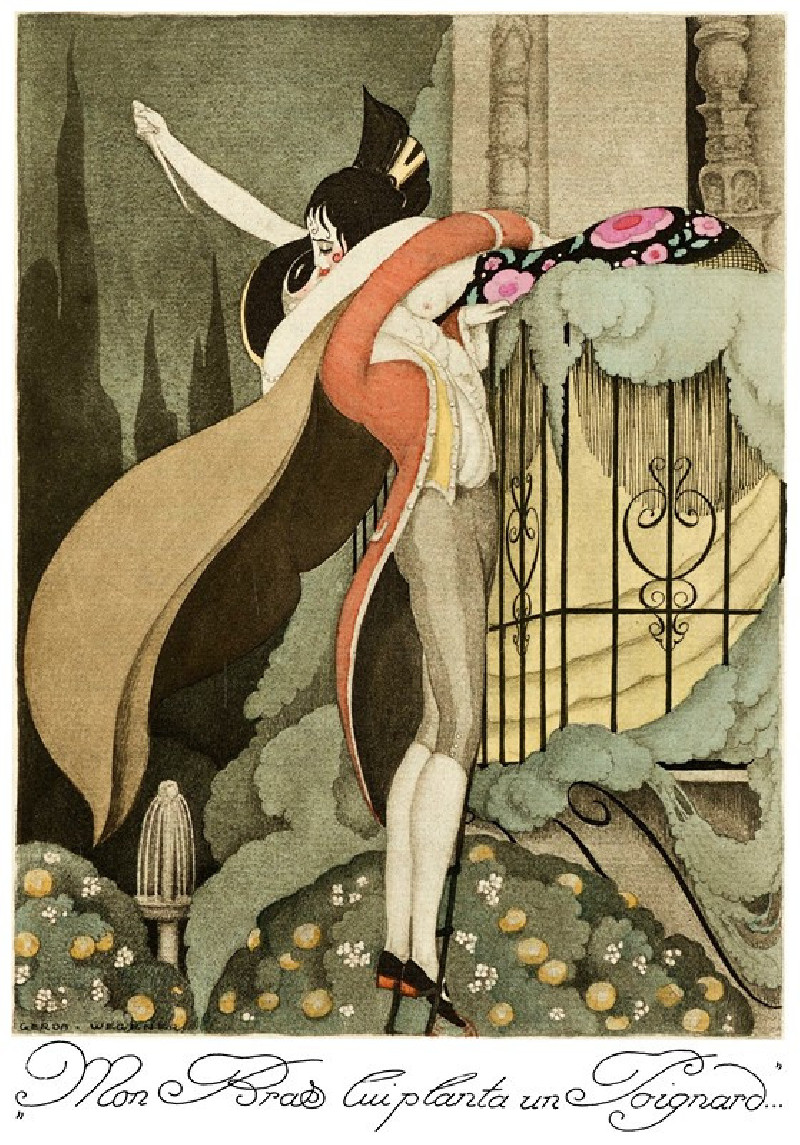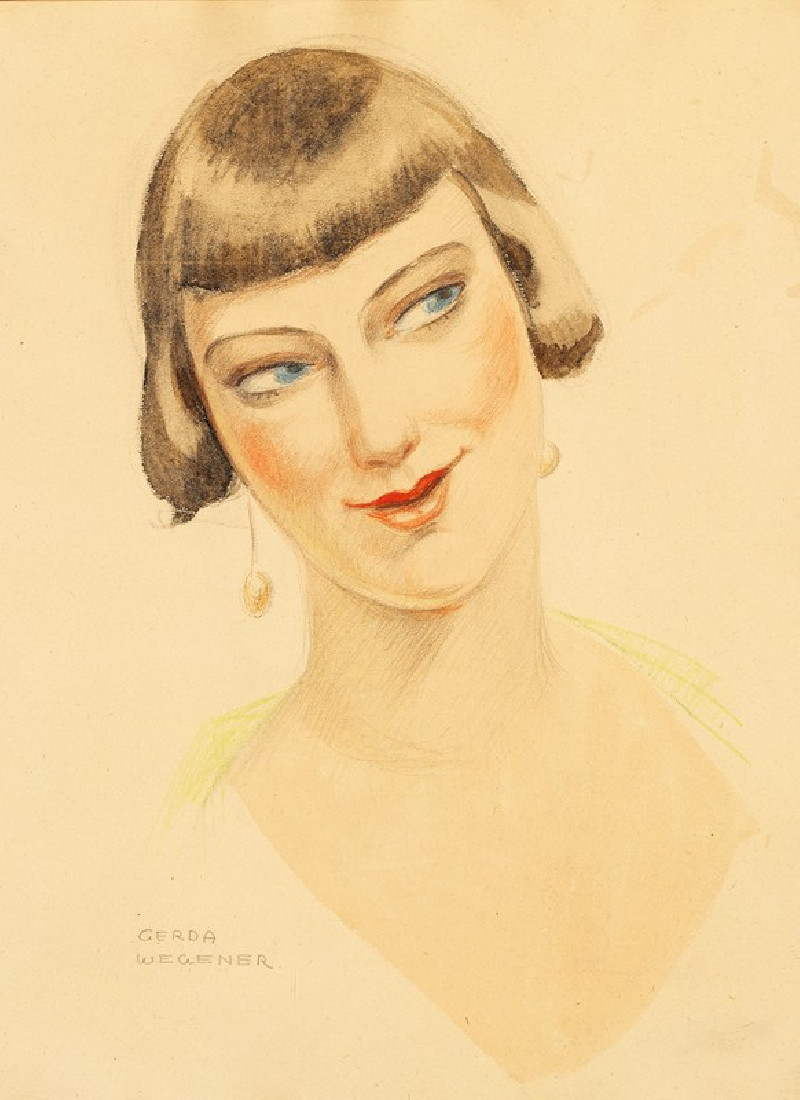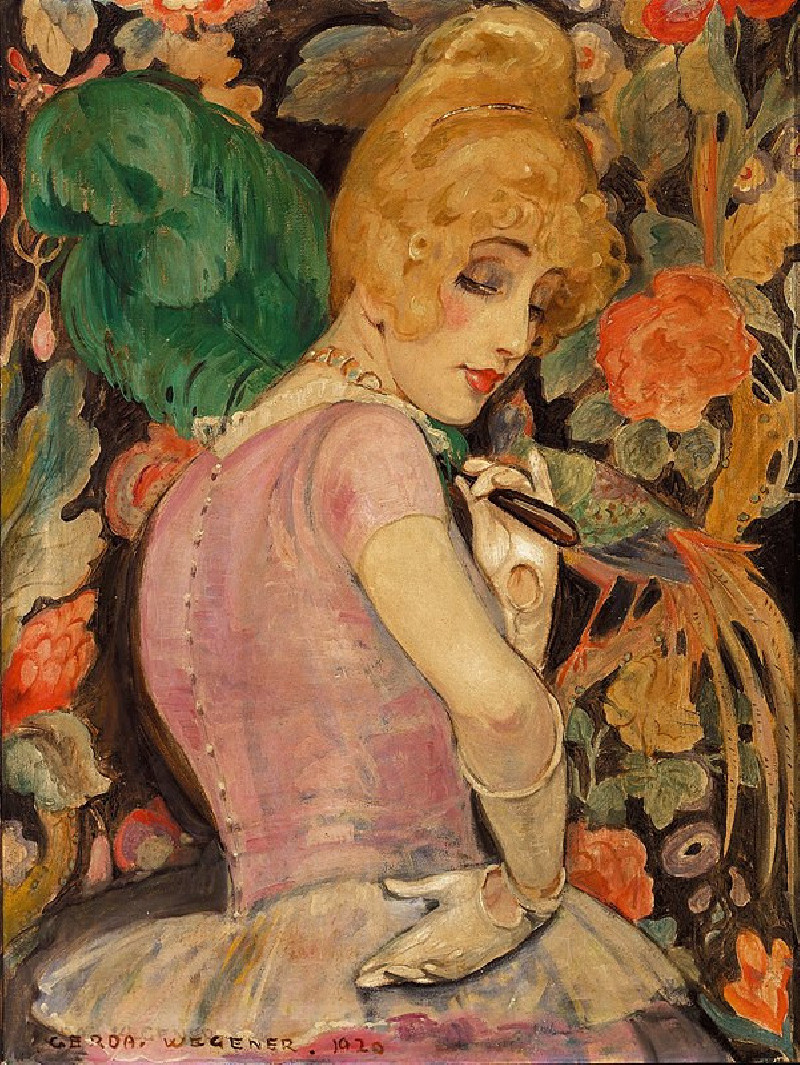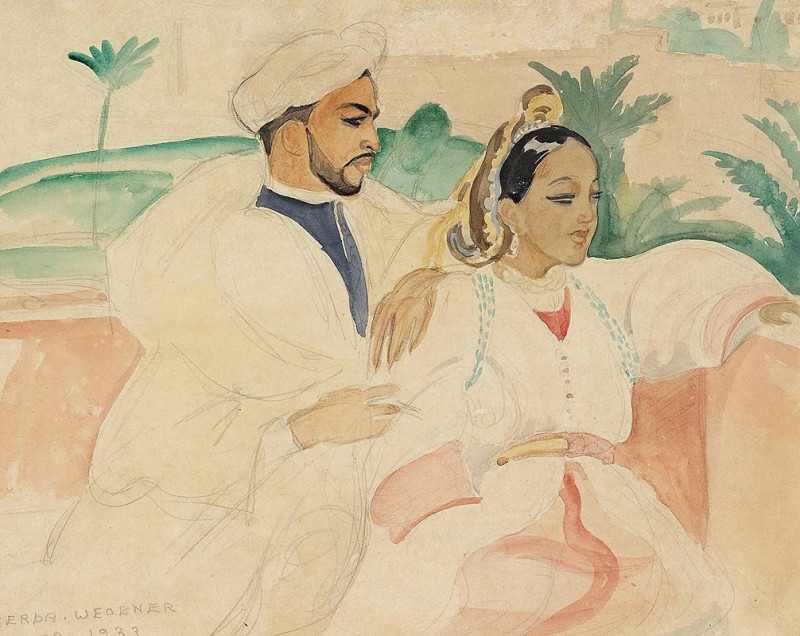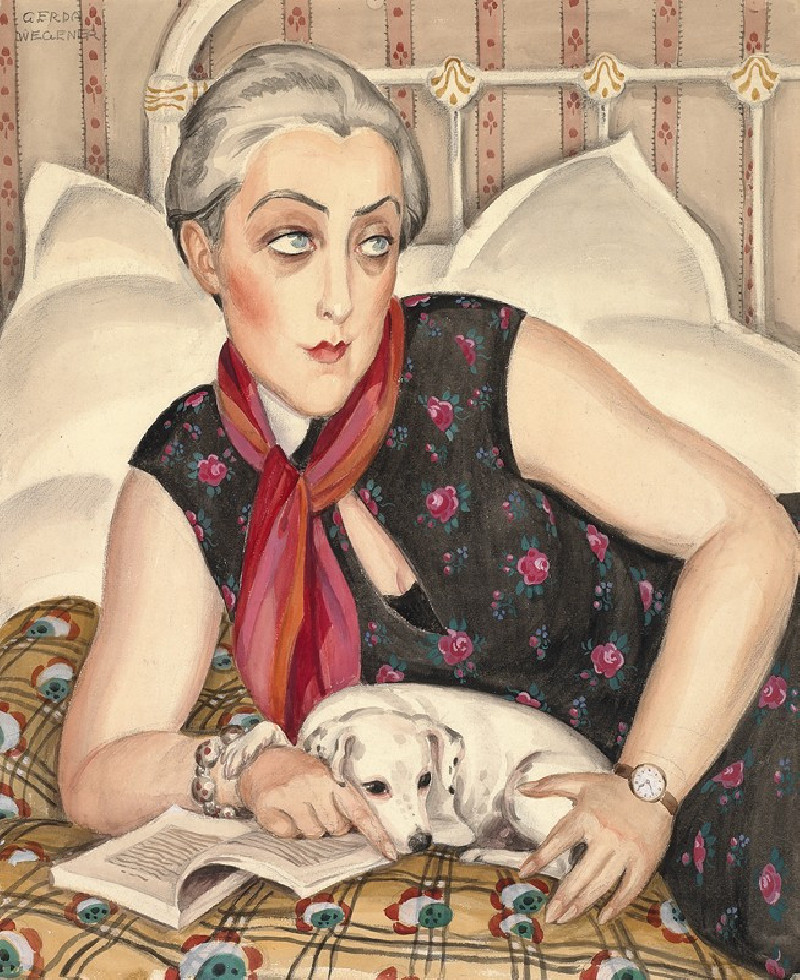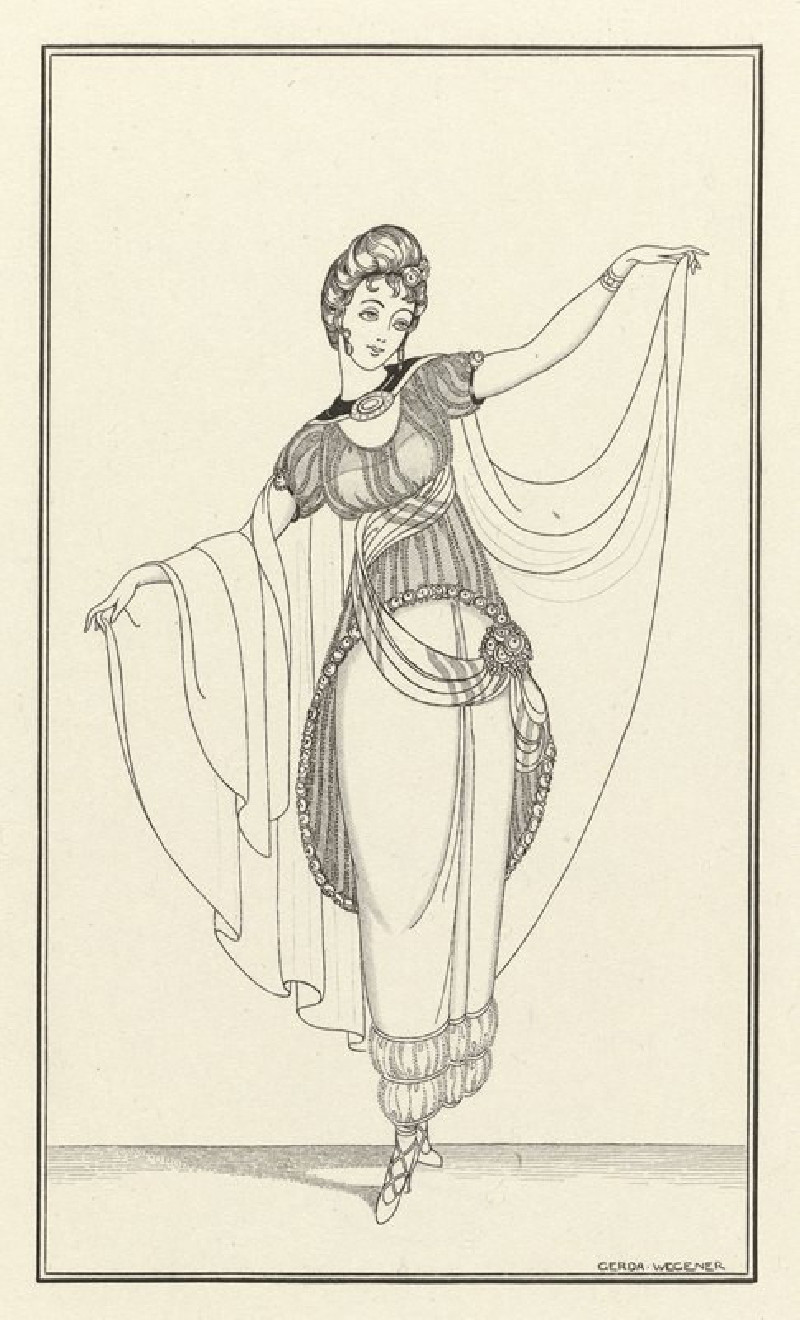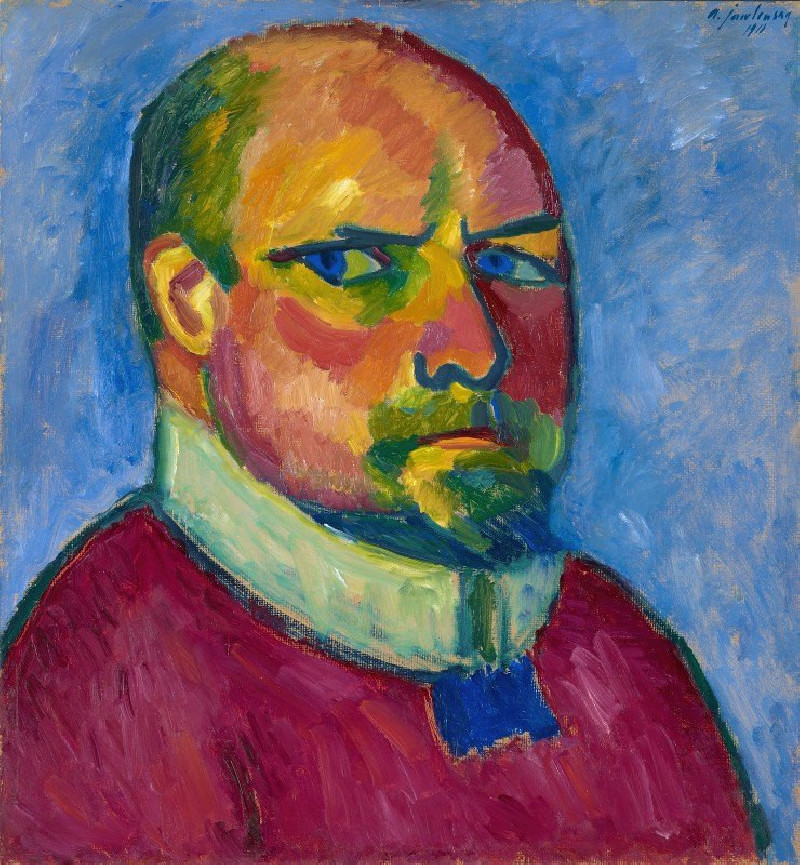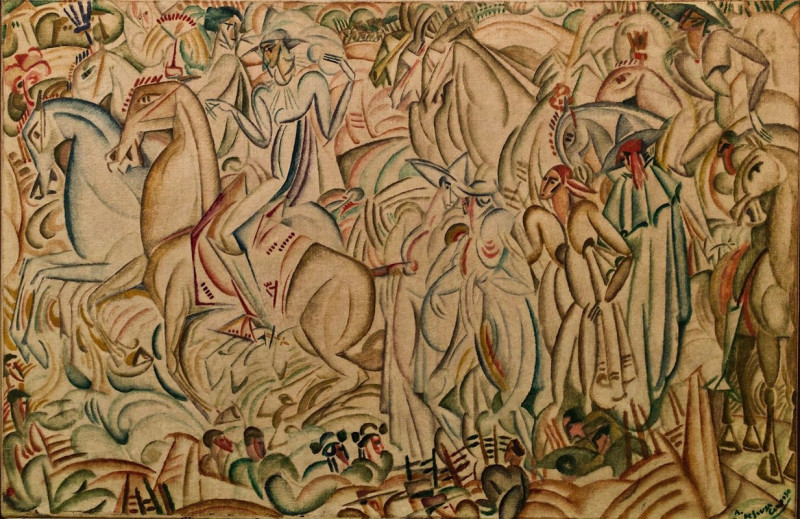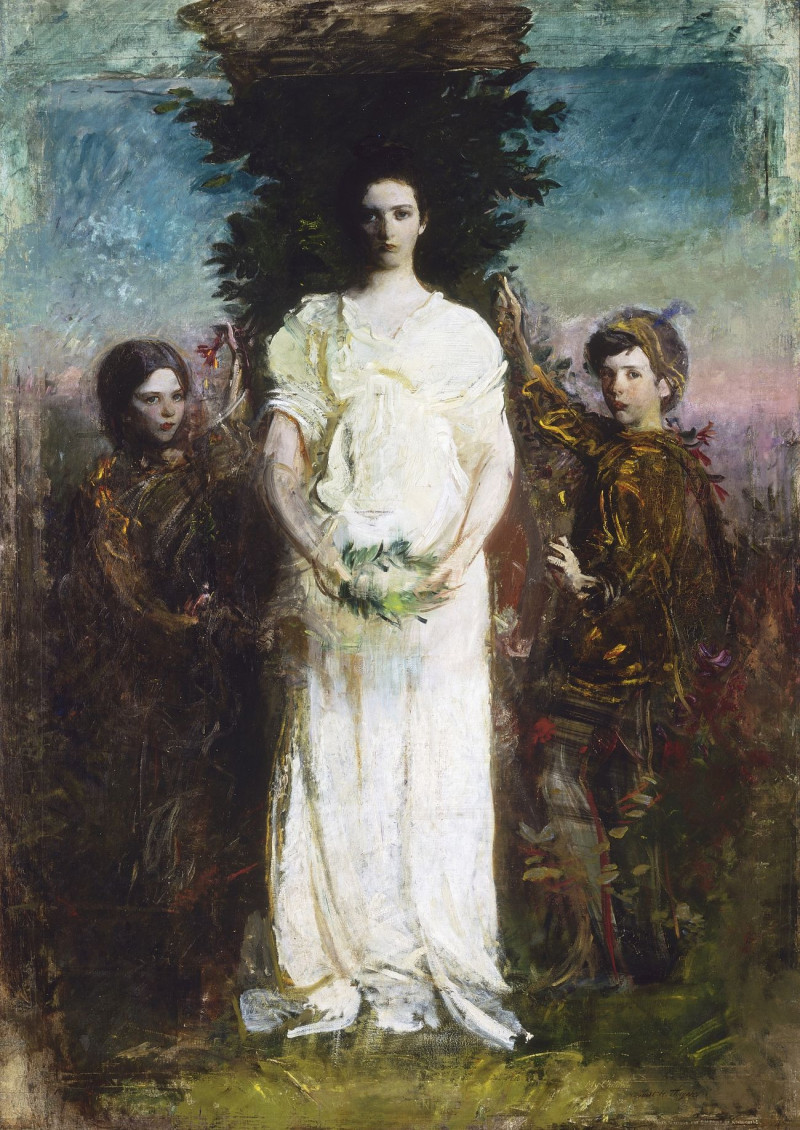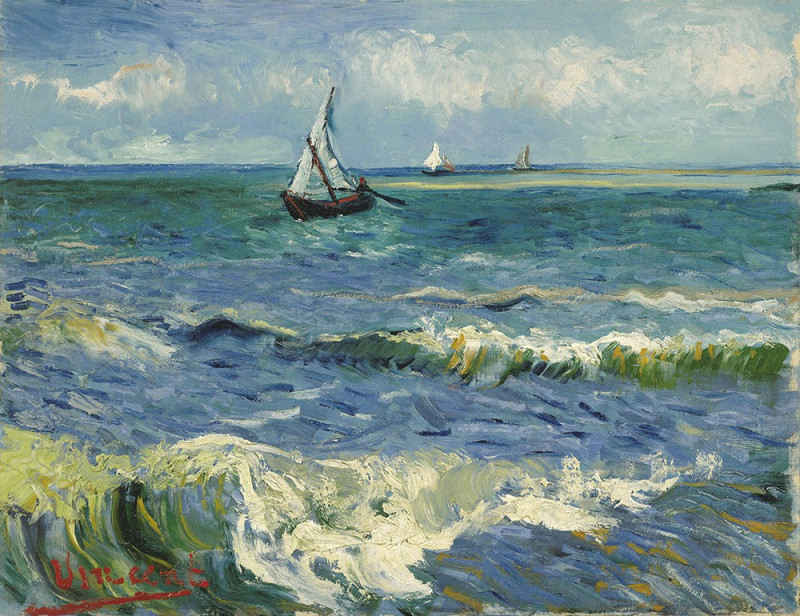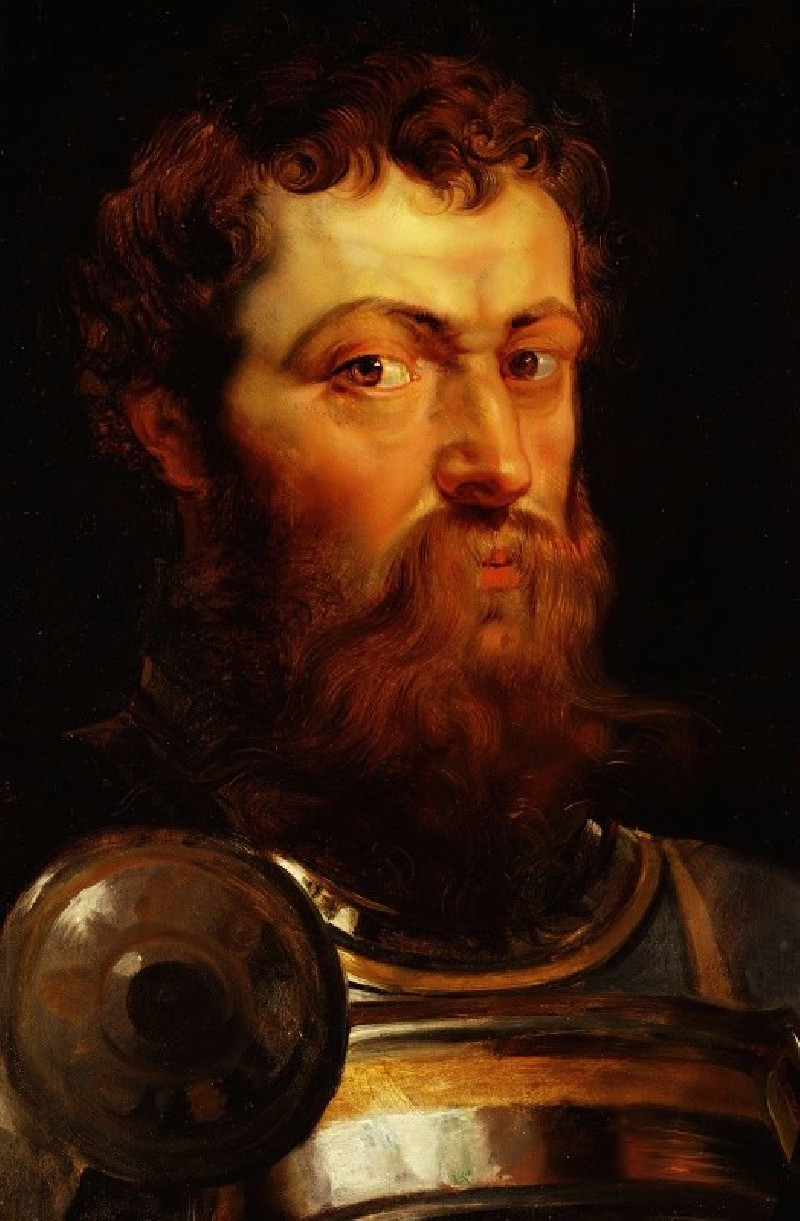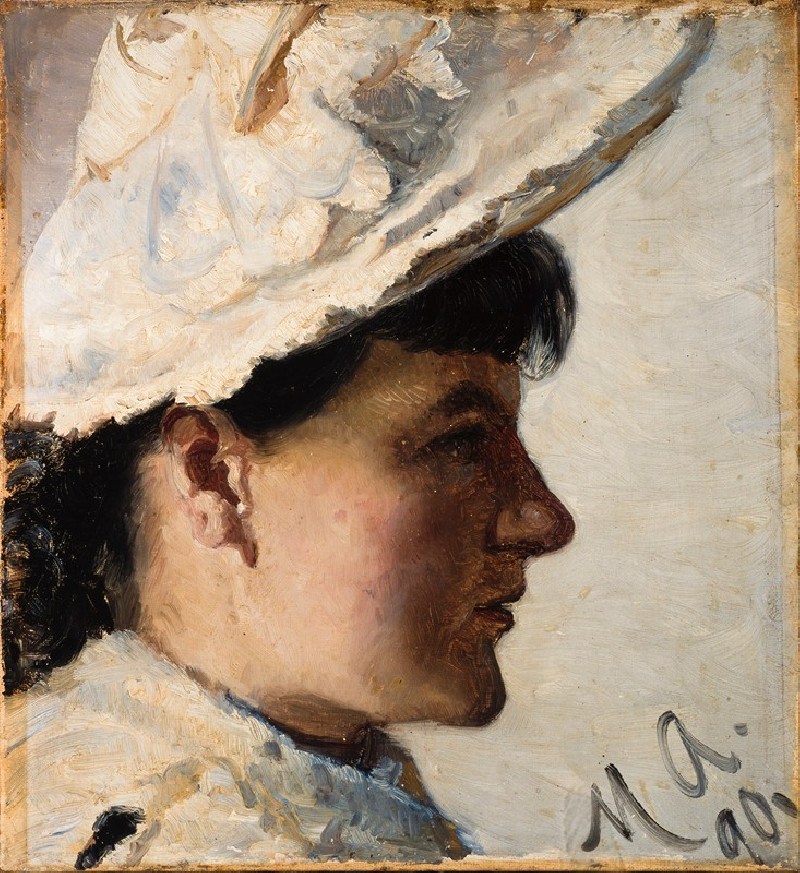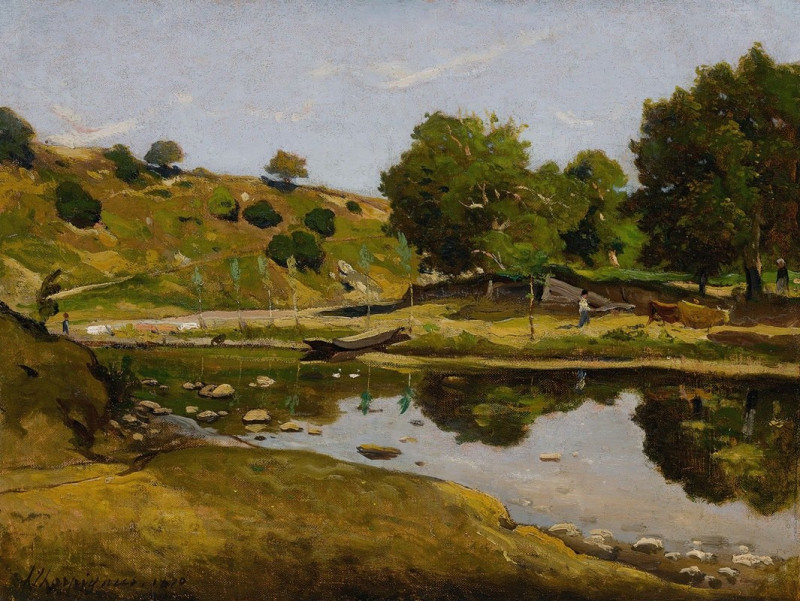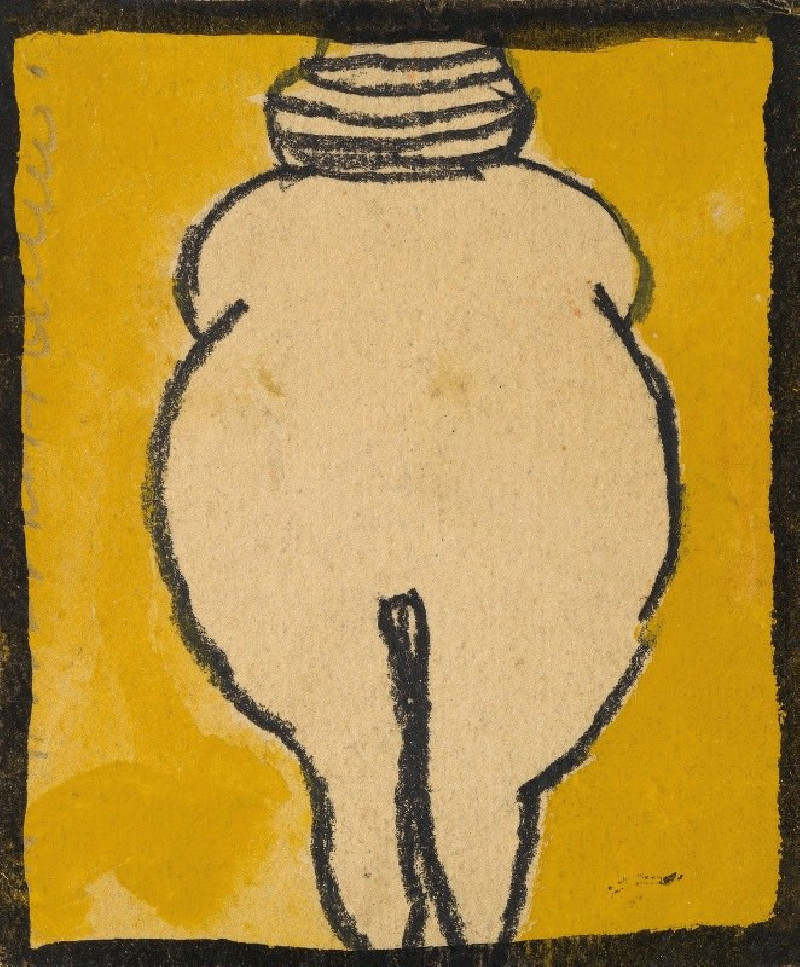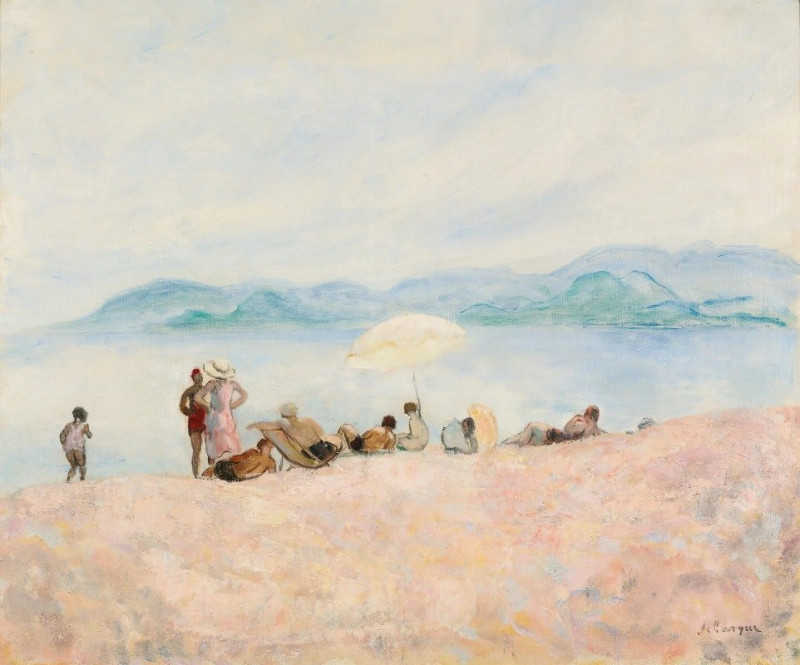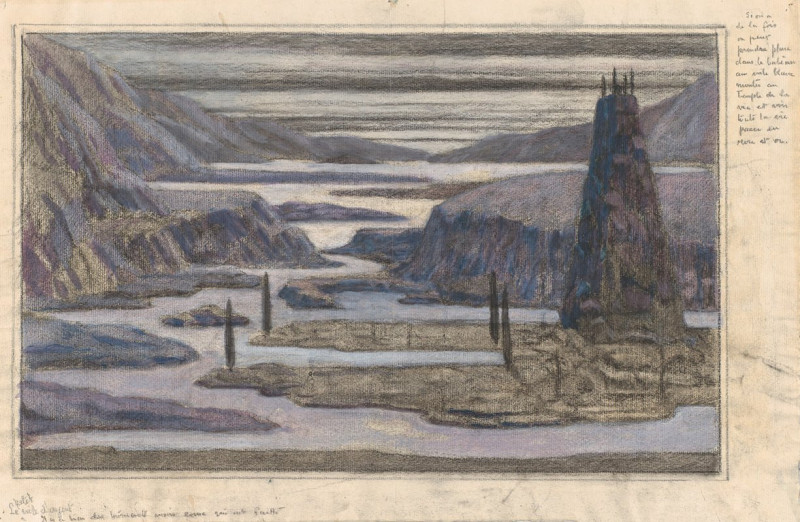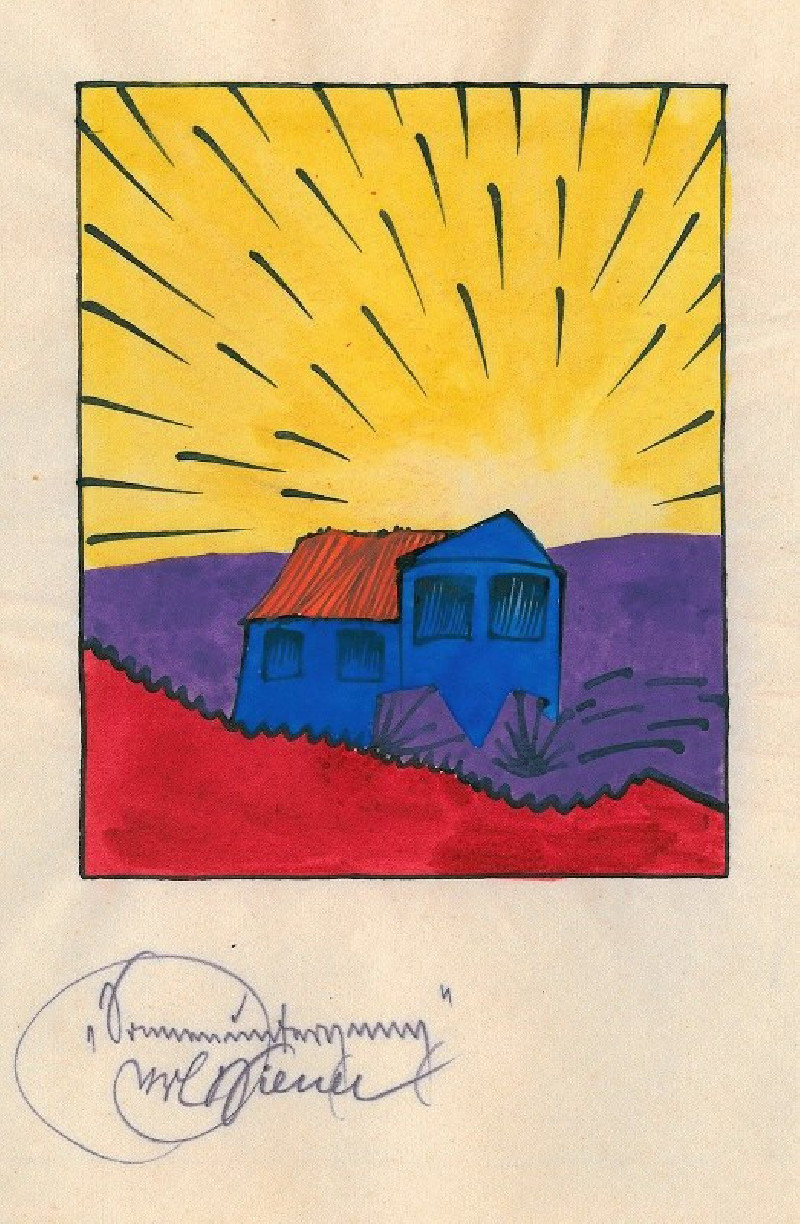Sur talons rouges pl 10 (1929)
Technique: Giclée quality print
Recommended by our customers
More about this artwork
Gerda Wegener's illustrious work, "Sur talons rouges pl 10," offers a captivating glimpse into the artist's richly imaginative and sensuously spirited world. Created in 1929, this painting showcases Wegener's unique flair for combining Art Deco elements with an almost cinematic scope in portraiture.The artwork features two figures set in an opulently decorated room. The central character is a robust, jovially adorned lady reclining comfortably amidst plush cushions and fabrics. Her attire is extravagantly detailed, featuring floral decorations and lace, which reflect her lavish lifestyle. She is shown interacting playfully with a small bird, which lends a whimsical and tender note to the composition.To her right, a slender, strikingly contrasted figure appears draped in a revealing costume highlighted by its delicate patterning and sheer material. Her dramatic makeup and engaging expression pull viewers directly into the scene, suggesting stories of intrigue and high society.The backdrop consists of elegantly simple paneling and ornamental designs that frame these characters, emphasizing the staged, almost theatrical quality of the setting. Wegener's use of muted yet rich color palettes and meticulous attention to texture lends an air of sophistication and dream-like surrealism to the painting."Sur talons rouges pl 10" embodies the height of Wegener's artistic expression, capturing the allure and the mystique of the era, while celebrating femininity in its various guises.
Delivery
Returns
Gerda Marie Fredrikke Wegener (15 March 1886 – 28 July 1940) was a Danish illustrator and painter. Wegener is known for her fashion illustrations and later her paintings that pushed the boundaries of her time concerning gender and love. These works were classified as lesbian erotica at times and many were inspired by her partner, the transgender woman Lili Elbe. Wegener employed these works in the styles of Art Nouveau and later Art Deco.

